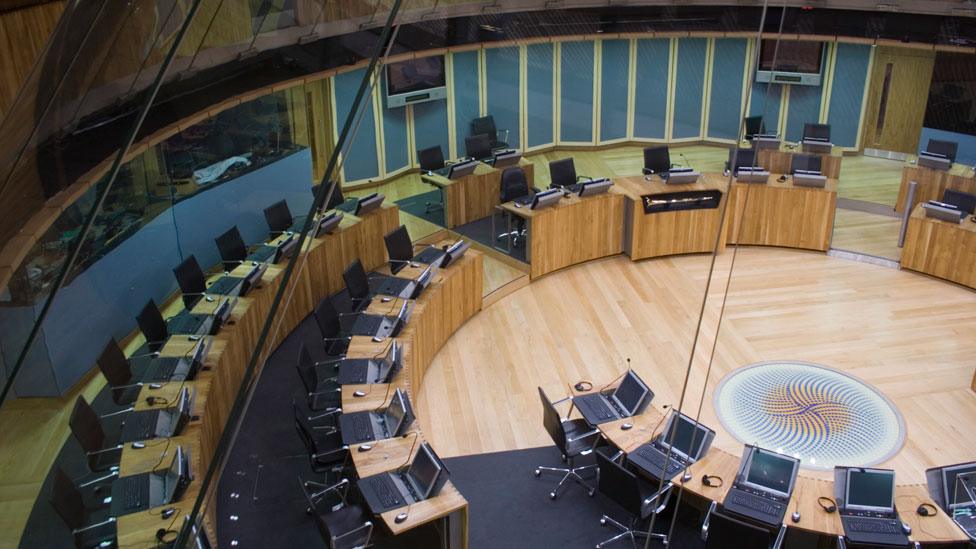Devolution and digital media: 20 years of change in Wales
- Published

The past two decades has seen online steal readers from newspapers
As devolution in Wales turns 20 another "d" is also marking its second decade - digital media.
Digital has overwhelmed and reconfigured the media's formally comfortable and traditional existence.
Newspaper circulations in 1997 were healthy with few other sources of local news. But 20 years on Welsh titles have seen sales drop by up to 80%
Before online news came along the only other places to get your Welsh news fix were TV and radio.
But the internet transformed the way people access media content - online is now a fierce rival and a sometimes uncomfortable bedfellow of established, old-fashioned news brands and platforms.
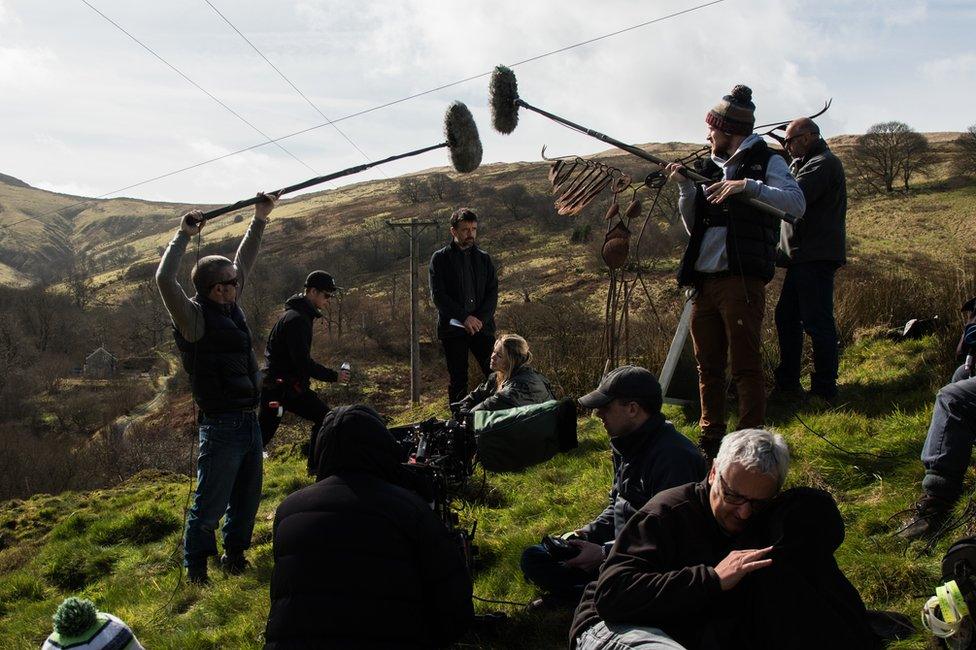
On-demand TV has helped programmes like Hinterland find an international audience
When votes were cast on 18 September 1997, the BBC was still two months away from launching its full online news service, and it was November of that year before BBC News 24 - its rolling news channel - came on the air.
Printed papers would grapple to maintain the attention of readers and advertisers in the years that followed, as the proportion of the population who could access the internet increased dramatically.

Newspaper circulation figures
Western Mail
1997: - 61,541
2016 - 15,259
A drop of 75%
South Wales Echo
1997: 74,246
2016 : 14,361
A drop of 80%
Daily Post
1997: 52,000
2016: 21,802
A drop of 58%
Source: ABC

Meanwhile, newspapers evolved their online sites to meet increased demand from readers and entered the fight to develop digital advertising revenue, while largely giving away their content for free.
Declining readership was a challenge that assembly members attempted to address, with a number of inquiries into the state of the press.
The political concern was encapsulated by former presiding officer Dame Rosemary Butler, who said falling Welsh newspaper circulations, and an audience preference for news from UK-wide sources, was creating a "democratic deficit" of information about Welsh affairs.
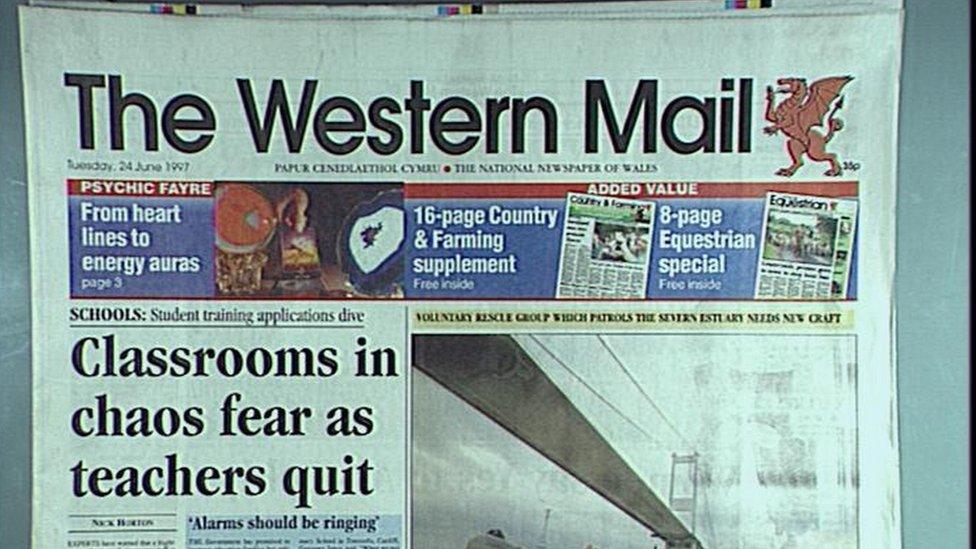
The Western Mail's circulation figures have dropped by 75% in 20 years
The climate proved too toxic for new Welsh language newspaper Y Byd, external (The World).
Despite a long campaign for the daily paper, and the establishment of a team to prepare for its launch, the project eventually failed in March 2008 before an edition had even been published.
When publisher Trinity Mirror closed three of its Welsh titles in 2009, the rise of hyper-local newspaper, The Port Talbot Magnet, gave some hope to those who felt there was still a market for local news where traditional publishers were retreating.
The Magnet has since closed, and the total number of journalists and newspapers in Wales has continued to decline.
More recently, the weekly paper Y Cymro has closed after failing to find a buyer.

On-demand TV means consumers have more choice than ever before
Digital developments have provided great technological benefits for broadcasters in Wales.
But the expanding number of platforms and sources of content have challenged public service broadcasters such as the BBC, ITV and S4C, which traditionally commanded a large share of the audience.
The vast choice of services, versus the trust still placed in most established TV channels, has offered some sanctuary, and the rates of audience decline are slight in comparison with the fall in newspaper circulations.
In fact, the average audience for BBC Wales Today in 2017 matches that of the late 1990s, though there has been a general fall in audience share for big channels such as BBC One.

TV Ratings
BBC Wales Today
1998 - Wales Today, BBC One Wales - 270,000
2017 - Wales Today, BBC One Wales - 270,000
No change
S4C's Newyddion
1998 - Newyddion (8.30pm) - 30,000
2017 - Newyddion (9pm)- 18,000
A 40% drop
BBC One
1998 - 30% share
2017 - 23% share
Data available from 1998 onwards. Source: BBC Cymru Wales

As well as increasing audience choice, digital technology has improved the ability of news operations to rapidly gather and broadcast audio and video on location.
Meanwhile, the rise of on-demand TV services, such as Netflix and Amazon Prime, have allowed programme makers in Wales to find a global audience for series such as Hinterland, that would have traditionally been confined to UK channels.

Almost two thirds of adults have a social media account
But perhaps the greatest change has been in the time we spend on devices and networks that simply did not exist when Wales voted for devolution.
Media regulator Ofcom said almost two thirds (65%) of all adults, external have a social media account, while half of adults (51%) said they watched TV content on-demand.
Older adults, as well as teenagers, have also taken to the technology.
But there is a still a marked generational difference, with 97% of internet users aged 16-24 saying they watch content on video-sharing websites, compared with 25% of over-75s.
Huge demand for online content has driven the investment in the digital operations of Welsh media organisations.
WalesOnline, which publishes the content that would have made the pages of The Western Mail and The Echo 20 years ago, has experienced consistent growth in visitor numbers.

Online Reach
WalesOnline has 6,761,649 average monthly unique browsers (July 2017)
Daily Post has 2,145,355 average monthly unique browsers (July 2017)

The challenge remains for commercial news operations to monetise their online content, without alienating audiences with indelicate advertising or trivial content.
So, what is next?
Politically, the last 20 years have shown the difficulty facing assembly members in trying to stem the institutional changes that have led to large-scale job losses in journalism.

Huge demand for online content has driven digital investment in Welsh media organisations
Presiding Officer Elin Jones is currently considering the recommendations of a report that suggests she should employ a team of journalists at the assembly, led by an impartial editor, to generate news stories about the institution.
Away from news, the development of the TV industry in Wales has been fuelled by the demand for high-end drama production from new players such as Netflix.
It has been a priority area for the Welsh Government, keen to reap the economic benefits of attracting key talent and big budget productions to the studios and locations around Wales.
The stark differences between 2017 and 1997 demonstrate how quickly the media landscape can change.
The hundreds of editorial staff laid off by newspaper bosses would perhaps shrug their shoulders at the survival of many print titles, seemingly against the odds.
But the ability of news media, and the wider creative industries, to adapt and evolve has been crucial for those who have endured or embraced 20 years of change, and will be vital in uncertain times to come.
- Published18 May 2013

- Published25 February 2015
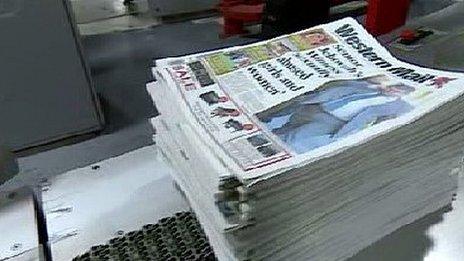
- Published15 June 2017
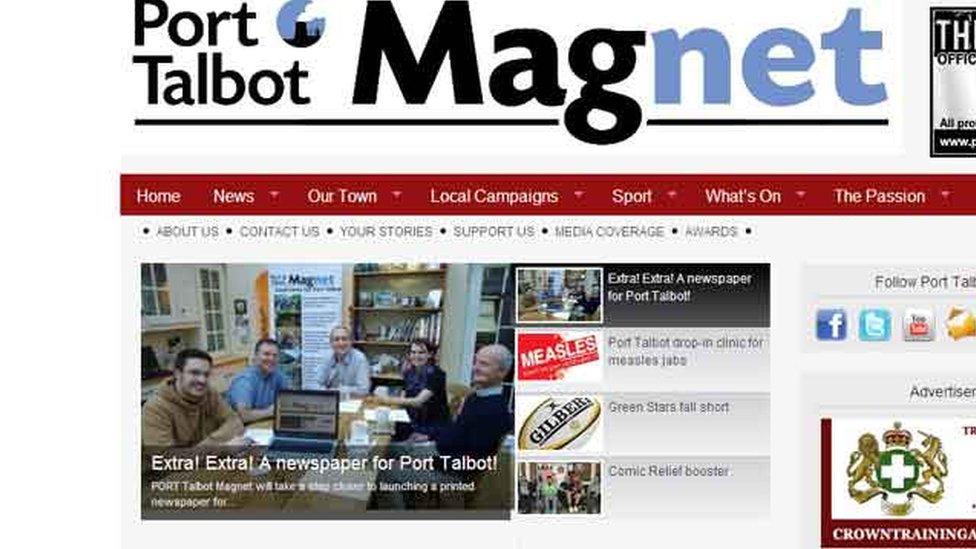
- Published21 June 2017
